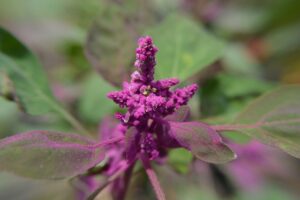Introduction
Quinoa, often described as a “superfood” or a “super grain,” has rapidly gained popularity in recent years due to its numerous health benefits. Quinoa benefits are many! Originating from South America, this nutrient-packed seed is celebrated not only for its versatile culinary uses but also for its exceptional nutritional profile. With a rich and slightly nutty flavor, quinoa serves as a healthy substitute for rice and wheat. Noteworthy for its high protein content, it also boasts a wide range of essential vitamins and minerals, making it an excellent dietary choice for those seeking to attain a balanced diet.
Benefits of Quinoa
- Rich in Nutrients: Quinoa is packed with essential nutrients, including protein, fiber, iron, and magnesium.
- High in Protein: It is one of the few plant foods that contain all nine essential amino acids, making it a complete protein source.
- Weight Loss Friendly: The high fiber content of quinoa can help with weight loss by making you feel full for longer.
- Gluten-Free: Quinoa is a great choice for those following a gluten-free diet.
- Supports Metabolic Health: Some studies suggest that quinoa can help regulate blood sugar levels and improve overall metabolic health.
- Easy to Incorporate in Diet: Quinoa’s mild flavor makes it versatile, and it can be included in a variety of dishes.
- Rich in Antioxidants: Quinoa is loaded with antioxidants, which can help protect against many diseases.
How to Grow Quinoa
Growing your own quinoa can be an interesting and rewarding endeavor. Although it originates from the Andean region, quinoa is quite adaptable and can be grown in a variety of climates. Here’s a simple guide on how to grow quinoa.
- Choosing the right time: Quinoa seeds should be sown in late April or early May, when the soil temperature reaches around 60°F.
- Prepare the Soil: Quinoa prefers well-drained, loamy soil with a pH between 6.0 and 7.5. Make sure to mix in some compost or aged manure to enhance the fertility of the soil.
- Sowing the Seeds: Plant the seeds 1/4 inch deep and around 10 to 14 inches apart. Cover them lightly with soil. Quinoa plants can range from 3 to 9 feet tall, so make sure to leave enough space between each plant.
- Fertilizing: If the soil is not rich in nutrients, you may need to fertilize with a balanced fertilizer once or twice during the growing season.
- Harvesting: Quinoa is ready to harvest when the leaves begin to turn yellow and fall off. Cut the stalks at ground level and hang them in a
- Watering: Water the seeds immediately after planting, and keep the soil consistently moist until the seeds germinate. Once the plants are established, they’re relatively drought-tolerant.
- Weed Control: Keep the area free of weeds, as quinoa seedlings are not competitive. However, once the plants are around 1 foot tall, they can hold their own against most weeds.
- Harvesting: Quinoa is ready to harvest when the leaves have fallen off, and only the dried seed heads remain. The seeds should be hard and difficult to dent with your fingernail.
Growing quinoa at home not only provides a tasty and nutritious food source but also adds beauty to your garden with its vibrant, colorful seed heads.
Threshing and Winnowing Quinoa
Threshing is the process of removing the seeds from the plant. For quinoa, this can be done by rubbing the seed heads between your hands or against a rough surface. You can also whack the heads against a board with a trap under it or use a pounder in a bucket.
Winnowing is the process of separating the seeds from the chaff. This can be done by pouring the threshed material from one container to another in front of a fan or in a breeze. The light chaff will be blown away, while the heavier seeds fall straight down into the container. Repeat this process until you have mostly clean seeds.
You must rinse the quinoa seeds well in water before cooking to remove any remaining saponins, a natural coating that can give the quinoa a bitter taste. You can use the drained water as a soap! After rinsing, spread out the seeds on a tray and let them air dry. Once dry, store your quinoa in an airtight container in a cool, dry place.
Cooking with Quinoa
Quinoa is an incredibly versatile ingredient that lends itself to a wide range of culinary creations. From refreshing salads to flavorful stir-fries, hearty soups, and even delightful desserts, the possibilities are endless. Enjoy it as a standalone side dish, or elevate its taste and texture by combining it with other grains like rice. Quinoa truly offers a world of delicious possibilities.
To cook quinoa, use a 1:2 ratio of quinoa to water. To prepare, bring the water and quinoa to a boil. Then, reduce the heat and allow it to simmer for 15-20 minutes until the water is fully absorbed. Use a fork to fluff the quinoa and let it cool before incorporating it into your desired recipe.
Quinoa can also be sprouted by soaking in water for 8 hours and then draining and rinsing every 12 hours for 2-3 days. This increases the nutritional value and digestibility of the quinoa.
Conclusion
Quinoa, a remarkably nutritious and adaptable grain, lends itself to countless culinary creations. From its origins as a staple food of the Incan civilization to its popularity in modern cuisine, quinoa continues to be a valuable source of protein and essential nutrients. With proper preparation and cooking techniques, you can enjoy the many health benefits and delicious taste of quinoa in your meals. So next time you’re looking for an alternative to rice or pasta, consider giving quinoa a try! Experiment with different recipes and discover the endless possibilities of cooking with this ancient superfood. Happy cooking!


